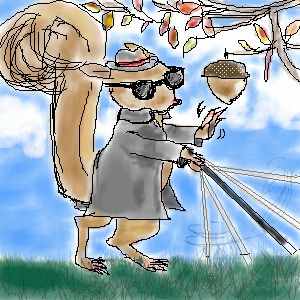- Joined
- Jan 3, 2013
- Messages
- 20,091
- Reaction score
- 1,023
A lead ball then....

A well know problem with muskets loaded without patches or wadding, as shown by Robins in the early 18th century. Called the Magnus effect, first described by Isaac Newton in the early 1670s. Discussed at length by Cleator in an Essay on Shooting, and the experiment proving that musket balls curved because of spin on some axis other than the longitudinal one is described in detail in Cornhill Magazine, 1899, at this link.colorado clyde said:A lead ball then....
If you give a thought to the projectile being fired, you have to ask yourself why any spin at all is necessary for a roundball. There's no question an elongated projectile needs spin to stabilize it, and the longer it is the more/faster spin it needs. That's easy to prove by shooting one with too little spin and watching it keyhole. But a round ball...? No matter which way you turn it, it's all the same. Can't keyhole, but what if it does, it's all the same.
Ever since I figured out that accuracy with a round ball in a smoothbore is not all that different from a rifle, I've suspected that we've been thinking about it sorta backwards. The way I load my smoothbore guarantees the ball doesn't spin, and with no spin whatsoever it will shoot sub-4" groups at 100 yards. So, what is the spin contributing to accuracy when that ball is shot from a rifle with spin? It can't be much.
I suspect that the situation is more like this...spin certainly increases accuracy with long bullets, but it's the case that spin of a round ball adds nothing to accuracy, it just doesn't take anything away from it. Round balls don't need spin at all, they just tolerate it. Doesn't help, doesn't harm.
Spence
Not so. Magnus force has nothing to do with the ballistics of the balls I'm firing. Spin around the flight axis prevents spin around any other with a rifled barrel, but so do the wads or patches used in a smoothbore. The comparison has to be between spin around the flight axis or no spin of any type around any axis at all.colorado clyde said:Without rifling, the projectile is more susceptible to other forces (like drag) resulting in the magnus affect changing the flight path...
Magnus force is a red herring in this problem.The questions I have are; Does a large ball generate more Magnus force than small ball?
And does forward velocity increase or decrease the affect?
If so, which would be more inherently accurate fired from a muzzleloader?
George said:The way I load my smoothbore guarantees the ball doesn't spin, and with no spin whatsoever it will shoot sub-4" groups at 100 yards. Spence
Yes!...Because although you think your balls are not rotating, they will move more over distance and as you velocity drops off...George said:So, my question is still the same as before.... is any spin necessary for a round ball to shoot accurately?
Spence
I know of no forces which would act to take it out of that new orientation once it is complete. I've never been able to understand why a ball would "wobble" in flight.
Of course it will. That 4" figure, however, is from a very old man with trifocals shooting a smoothbore with no rear sight. That same smoothbore and load shot by some hotshot young guy with eagle vision and a rear sight would do much better than that, I believe.colorado clyde said:A rifled gun will shoot better than that 4" at 100 yards....
Last time I checked there was what is called zero gravity in outer space. And, what does gravity have to do with the problem, any way?

shotgunner87 said:In theory I believe that ball would "knuckle" when it reached a certain speed. I don't know why but I do know knuckleball pitchers need to be careful with the speed at which they throw if it is to fast or to slow it will not knuckle.
Uh, Dave,
You do realize the size targets used for the Baker were SMALLER than what you fired on at the 200 yard line on active duty? The 5 ring bullseye was 12" in diameter, the 4 ring was 24" (same width as the Baker target), the 3 ring was 36 inches and the 2 "ring" was the entire 6 foot by 4 foot target. Just because a target is big really doesn't mean much with good marksmanship and a good rifle.
I just can't get it out of my mind the British Shooter who recently fired his Original Baker rifle at 200, 300 and 400 yards OFFHAND and put the first shot into pretty much the center a man sized silhouette at each distance. He used an original mold, but I don't know if he used leather or cloth patches.
There were recorded kills with the Baker during combat, somewhat beyond 400 yards during the period as well, though most likely shot from some kind of a rest.
Enter your email address to join: